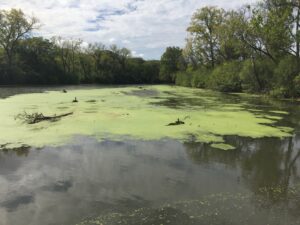No one wants a soggy, flood-prone yard. Standing water can kill grass, damage your home’s foundation, and create the perfect breeding ground for mosquitoes. Fortunately, there’s a stormwater solution that can address standing water: rain gardens!
Rain gardens are shallow basins planted with native plants that thrive in wet conditions. They collect and soak up rainwater, helping to reduce flooding. At the same time, these plants filter pollutants in stormwater and provide essential habitat for birds and butterflies.
In this blog, we’ll highlight a few Illinois native plants for rain gardens and wet areas. These workhorse rain garden plants not only infiltrate water but also bring beauty and biodiversity to your yard.
Native Plants for Rain Gardens
Rain garden plants tolerate wet conditions and infiltrate water into the soil. Consider adding the following perennial native plants into your rain garden:
Swamp Milkweed, Asclepias incarnata
Swamp milkweed is a great rain garden plant since it thrives in moist or wet soil but can also tolerate dry spells. Swamp milkweed is also a fantastic butterfly plant. It is a host plant for monarch butterfly caterpillars. Its fragrant flowers attract other kinds of butterflies too.
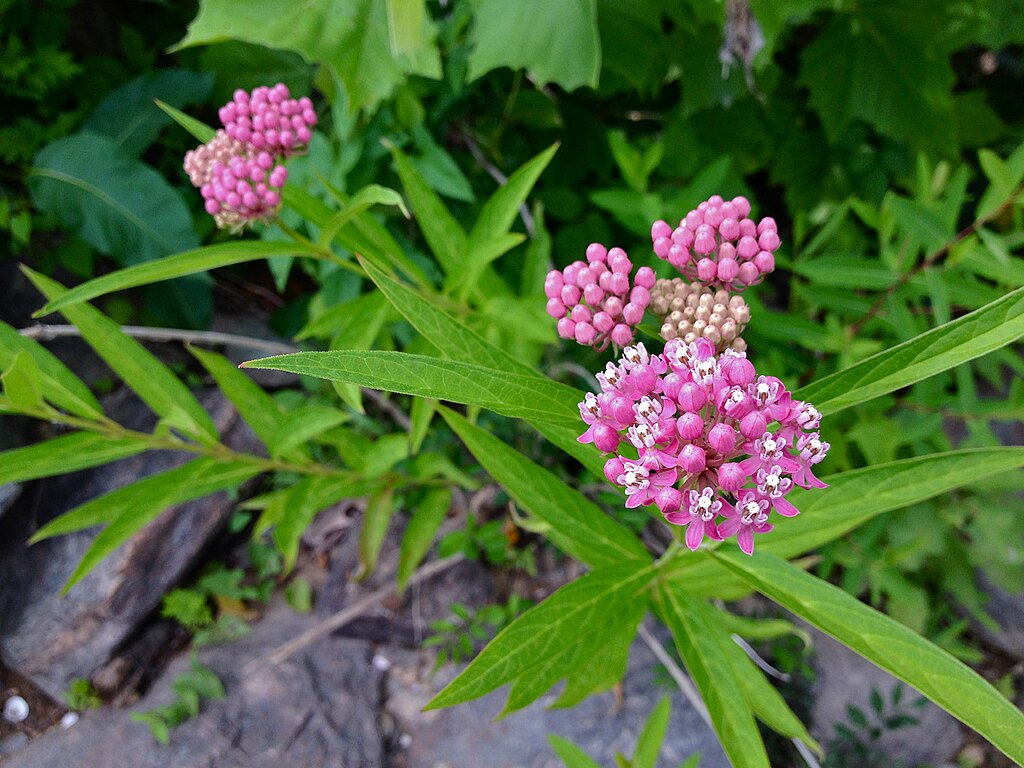
Height: 3-4 ft
Flower color: Pink
Bloom time: July, August
Light exposure: Full to partial sun
Natural habitat: Moist areas like floodplains and along rivers
Marsh Blazing Star, Liatris spicata
Marsh blazing star has vibrant spikes of unique purple flowers that attract a variety of pollinators. There are other types of native blazing stars, but marsh blazing star does the best in moist to wet soil.
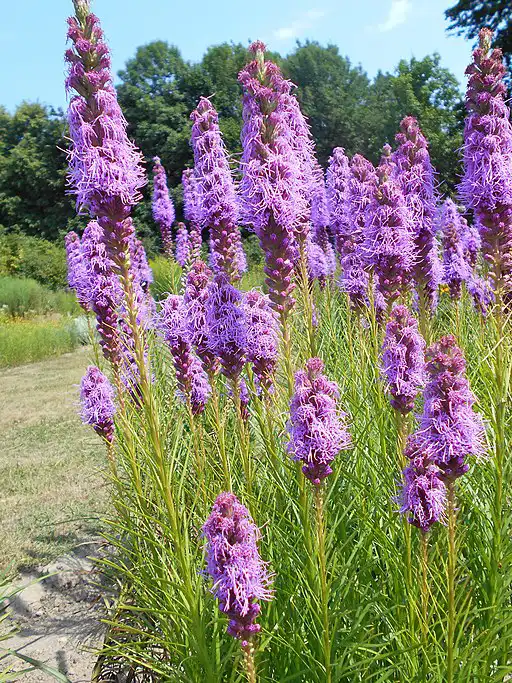
Height: 3-4 ft
Flower color: Purple
Bloom time: July, August
Light exposure: Full sun
Natural habitat: Moist black soil or sand prairies, edges of marshes and bogs
Great Blue Lobelia, Lobelia siphilitica
Lobelia tends to be a shorter native flower. It has clusters of blue-violet flowers that attract bumblebees and other long-tongued bees. Lobelia prefers moist soil and tolerates occasional flooding.
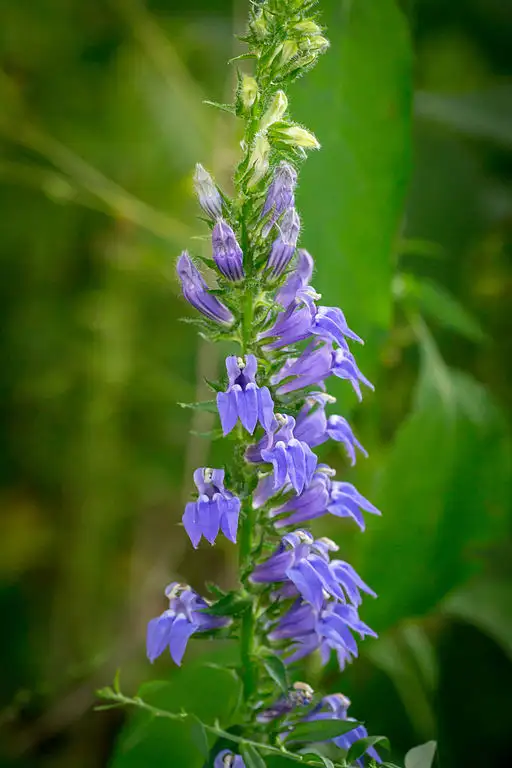
Height: 2-3 ft
Flower color: Blue
Bloom time: July, August, September
Light exposure: Partial sun
Natural habitat: Moist black soil prairies, soggy meadows near rivers, floodplains, or swamps
Cardinal Flower, Lobelia cardinalis
Cardinal Flower has a spike of striking red flowers that hummingbirds love. It grows well in moist, wet areas, making it an appropriate (and beautiful!) addition to a rain garden.

Height: 3-4 ft
Flower color: Red
Bloom time: July, August, September
Light exposure: Full to partial sun
Natural habitat: Wet prairies, prairie swales, floodplains, along rivers and ponds
Golden Alexanders, Zizia aurea
Golden Alexanders blooms earlier than other common rain garden plants. Its clusters of small, bright yellow flowers attract many kinds of pollinators.
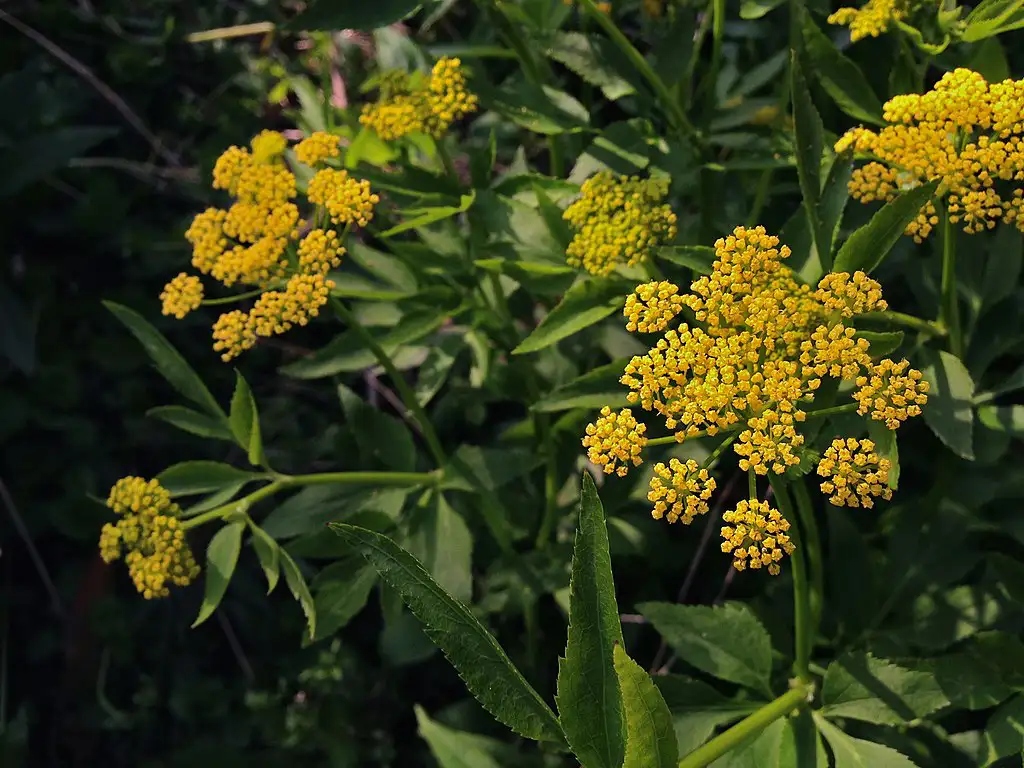
Height: 2-3 ft
Flower color: Yellow
Bloom time: April, May, June
Light exposure: Full to partial sun
Natural habitat: Moist but well-drained soils like black soil prairies, clearings in wooded areas
Blue Flag Iris, Iris versicolor
Blue flag iris has large, showy blue-violet flowers with yellow centers that provide nectar for bumblebees, butterflies, and skippers. It blooms in the late spring to early summer.

Height: 2-3 ft
Flower color: Blue-violet
Bloom time: May, June
Light exposure: Full to partial sun
Natural habitat: Wet prairies, prairie swales, soggy meadows near rivers, swamps, along waterways
Sedges – Oval Sedge (Carex bicknellii), Brown Fox Sedge (C. vulpinoidea), Eastern Star Sedge (C. radiata) and others
Sedges are short, grass-like plants that add a lovely texture to native gardens. Sedges form dense clumps of fine leaves that help slow run off. Choose native sedge species that can handle both periods of flooding and dryness for your rain garden.
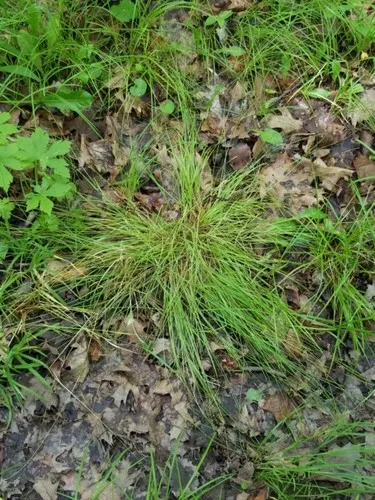
Height: typically, 2 ft or less
Flower color: varies, often green or brown
Bloom time: April, May, June
Light exposure: varies from full sun to shade
Natural habitat: varies
For more Illinois native plant recommendations for rain gardens, check out this resource from the Illinois Department of Natural Resources and The Conservation Foundation’s rain garden guide.
Sample Rain Garden Planting Plan
You’ll first need to create your rain garden. Once you’ve dug out the garden and created a berm, the next step is planting. Below is a sample of native plant selection and arrangement for a rain garden.

Bring Beauty and Function to Your Yard with Native Rain Garden Plants
A well-planned rain garden does more than manage stormwater—it transforms your yard into a thriving habitat for pollinators while adding beauty from spring through fall. By choosing native plants like swamp milkweed, marsh blazing star, and great blue lobelia, you can create an attractive, environmentally-friendly garden that soaks up excess rainwater. Start planning your rain garden today!




